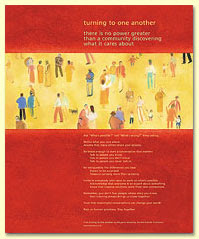In the November 2009 issue of the Harvard Business Review, an article entitled “Galvanizing Philanthropy” by Susan Wolf Ditkoff and Susan J. Colby asks all foundation leaders to get clear, get real, and get better at philanthropic investment. This is the LAST of three posts on the article.
Third: How can we improve our results over time? (Getting better)
Improving results and getting better takes the development of a culture of continual improvement and strong leadership. To improve outcomes, foundations must get constant feedback from the field and measure their results, something that we often demand of our grantees but do precious little of ourselves.
Once again, the authors suggest two traps to avoid: First, failing to solicit outside perspectives. Genuine feedback mechanisms create a learning loop that foundations need to up their game. Second, underestimating the power of nonfinancial assets. Some examples of nonfinancial assets that funders can bring to the table are long-term commitments and help with strategic planning.
In summary: Devise an ambitions and realistic strategy for social change, put it front and center, and demand a stronger performance from ourselves.
YEAR EIGHT REPORT ON AVI CHAI NOW AVAILABLE
-
YEAR EIGHT REPORT ON AVI CHAI NOW AVAILABLE
December 31, 2019
Joel Fleishman
2019
Download Report
Today, Joel Fleishman’s final report on the spend-down...
5 years ago


